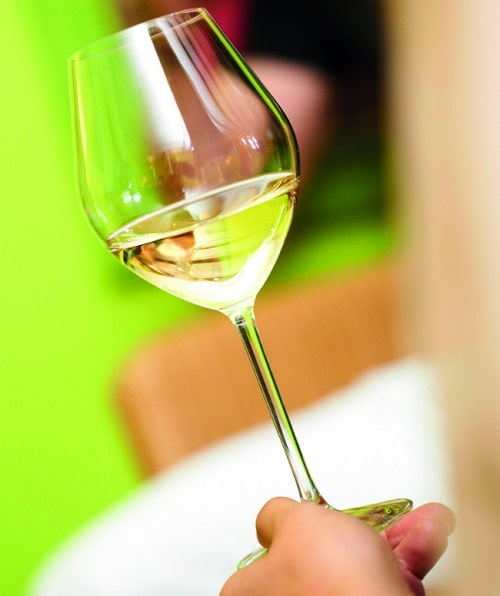There are almost as many types of wine glasses as there are wine regions in France, but don’t worry – there is one glass which is perfect for almost every type of wine, says sommelier Géraldine Clément
Did you know there is a difference between red wine glasses (larger bowls) and white wine glasses? Not only that, but there is a difference between a cabernet and a syrah glass (smaller with a more sharply tapering rim). And you certainly won’t want to be caught out pouring your sauvignon blanc into your chardonnay glass… Think you’ve got your fizz down pat? Wrong! There are three types of champagne flute, with the narrower preferred for young champers and other sparkling wines and a broader flute reserved for vintage champagnes to allow the complexity of their flavours to develop. And we haven’t even mentioned rosé or dessert wine!
It’s enough to make you put the wine back in the fridge and make a cup of tea instead. But according to sommelier-consultant Géraldine Clément, the traditional complexities of glassware can be safely ignored. Phew!
“Years of research have shown that one type of glass is perfect for most wines,” says Géraldine. “It should have a flared shape at the bottom, go up a little higher and narrow towards the opening, a bit like a tulip. This allows the glass to have an aeration surface large enough so that one can swirl the wine and develop the aromas, which are then captured by the nose in the upper part of the glass.”
Wine glasses pretty much follow this aesthetic, but with the added complications of grape variety:
- Red Burgundy glass: a rounded bowl concentrates the intense aromas of pinot noir that the nose can then capture through a narrower opening
- Red Bordeaux glass: a more slender bowl with a larger opening induces good oxygenation of the wine
- White Burgundy glass: a large bowl allows the wine to aerate at its widest point
- Champagne glass: the tapered shape which is very slightly convex frees the aromas while the bubbles rise gracefully towards the opening.
This design evolution stems from the work of Jules Chauvet, a winemaker from the Beaujolais region. In the 1950s, he developed a theory that the relationship between the volume of wine and its contact surface with air is directly related to the development of aromas. This led to the design of the famous INAO glass (named for the French appellations regulator), which has become the official tasting glass in France.
“Its only flaw is its small size, but all the major glass manufacturers, such as Riedel or Spiegelau, have drawn on it to improve traditional glasses or to create fairly universal ranges of glasses suitable for all wines,” says Géraldine. “If you want to avoid mistakes without having too many glasses, the tulip-shaped glasses are a good compromise for most wines – whites and reds, French and foreign.”
It should also be noted that there has never been a specific Côtes-du-Rhône glass. “In the Rhône Valley, the diversity of grape varieties is immense,” she adds. “This probably explains why these wines do not have specific glasses.”
So there you have it – you only really need one perfect wine glass… and perhaps a champagne flute, of course.














Great article. I was recently involved in a conversation about Champagne glasses and this article supports my views. Merci beaucoup!